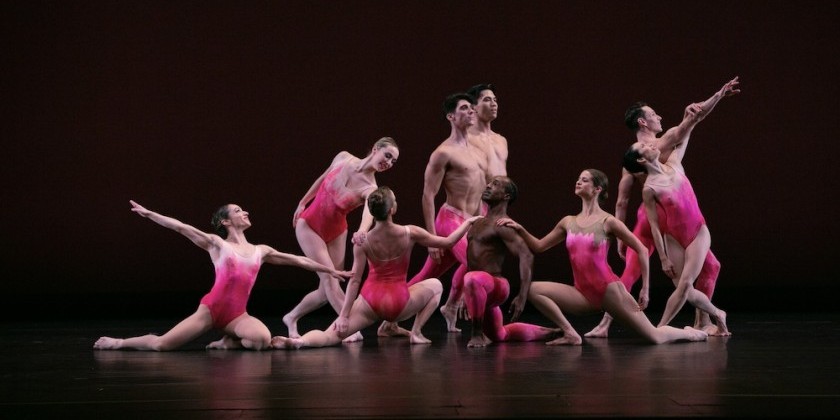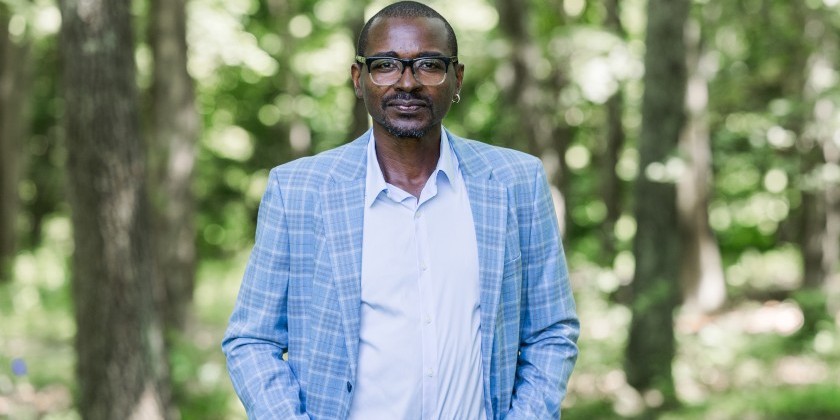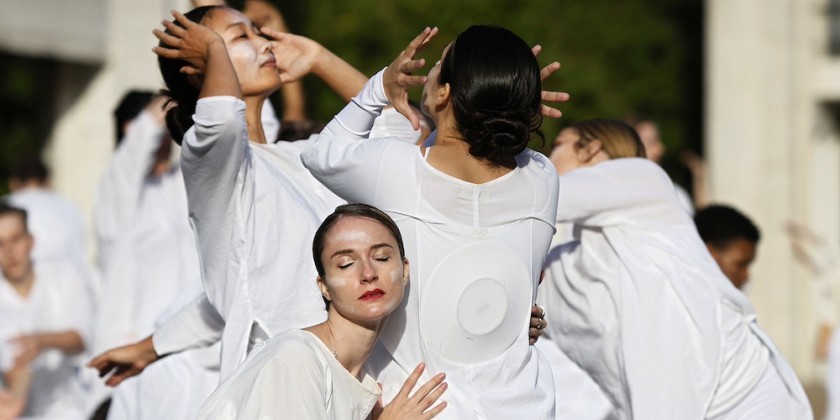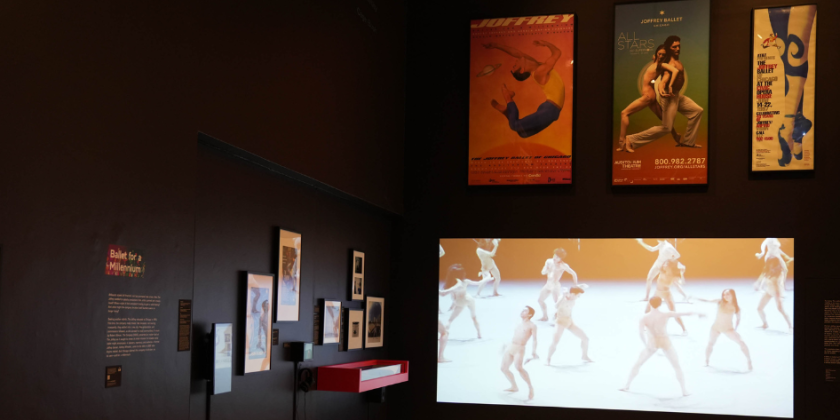IMPRESSIONS: Paul Taylor Dance Company with the Orchestra of St. Luke’s at Lincoln Center

Founder: Paul Taylor
Artistic director: Michael Novak // Resident choreographer: Lauren Lovette
Music director and conductor: David LaMarche // Conductor: Tara Simoncic
Principal lighting designers: Jennifer Tipton, James F. Ingalls
Principal set & costume designers: Alex Katz, Santo Loquasto, William Ivey Long
Rehearsal directors: Bettie de Jong, Cathy McCann
Choreography by Ulysses Dove, Amy Hall Garner, Larry Keigwin, Lauren Lovette, Paul Taylor
Guest artists: Vanessa Williams, Time for Three, William Catanzaro & CHAIN, Zac Posen
Executive director: John Tomlinson
Dancers: Eran Bugge, Christina Lynch-Markham, Madelyn Ho, Kristin Draucker, Lee Duveneck, Alex Clayton, Devon Louis, John Harnage, Maria Ambrose, Lisa Borres, Jada Pearman, Shawn Lesniak, Jake Vincent, Jessica Ferretti, Austin Kelly, Kenny Corrigan
Venue: David H Koch Theater
Dates: October 31 - November 12, 2023
Choreographer Paul Taylor (1930-2018) belonged to a generation of dancemakers who were suspicious of theatrics. Yet after a crisis in 1957, when he choreographed a dance without movement, Taylor quickly scrambled back onto the high road of art. He developed the ability to innovate without abandoning virtuosity, glamour, or human sensibility. The Paul Taylor Dance Company's rousing success at the David H. Koch Theater, at Lincoln Center, where the troupe performed October 31 to November 12, 2023 owes everything to Taylor’s willingness to accept those beloved theatrical conventions, and more.

In Esplanade (1975), Taylor achieved perfection, arranging simple, pedestrian movements with cunning changes of direction; while the plotless yet suggestive dance conveys a series of emotional states, passing from joy to grief, and from tenderness to athletic daring. Subsequently, Taylor continued to refine his choreographic skills in brilliant, “pure dance” pieces like Mercuric Tidings (1982), while he revealed a gift for characterization in dances which evoke a particular atmosphere (Eventide and Piazzolla Caldera, both from 1997), or where the music recalls a historical era (Black Tuesday, 2001). Le Sacre du Printemps/The Rehearsal (1980) is self-consciously melodramatic, though this dance’s zany complications ensure its plot can never grow stale. His company danced all these pieces gloriously this season.
Eventide’s gentle score and the backdrop picturing a misty, rural scene carry us into a nostalgic space, which Taylor fills with ingenious, communal dances and duets. Three of these duets give the piece its emotional depth, particularly those set to Vaughan-Williams’ “Carol” and “Musette,” which hint at a romantic struggle. This reticence adds to Eventide’s nostalgia. Would any lovers today be so forbearing?

In “Carol,” Lee Duveneck draws Eran Bugge near, though a wistful glance into the distance and her signature gesture, with a hand pressed to her chest, suggest her reluctance. They dance together intimately, yet at a certain point their connection breaks. As he carries her off-stage, she covers her mouth with her hand sharing with the audience a look of shock and apprehension. By the time this couple returns to the stage in “Musette” (three duets later), a change has occurred. Duveneck sits sulking, evidently disappointed, and it is Bugge’s turn to take the lead, drawing him back into familiar patterns. Her hand-to-heart gesture now suggests devotion, but these two may never feel a corresponding affection.
Meanwhile, Taylor entertains us with carefree romps for Jada Pearman and Austin Kelly (“Christmas Dance”) and Lisa Borres and Alex Clayton (“Moto Perpetuo”), the former chasing and tagging each other; the latter mostly airborne. “Ballad” suggests a destructive, erotic attraction. Maria Ambrose is searching for something when Kenny Corrigan appears in an upstage corner. He watches her stealthily, slides a (presumably sweaty) hand down his leg, and then summons her with a gesture that magnetizes and pulls her toward him. Pelvic thrusts and wrap-around lifts follow. He catches her by the arm, when she attempts to step away, but, in the end, he stalks off leaving her crumpled on the floor. The group dances in Eventide reveal Taylor’s mastery of design, but what makes this dance brilliant is his insight into human nature. Here the sunset of youth retains its golden glow, in spite of dissatisfaction and regrets. The effortlessness of some Taylor pieces belies their subtlety; and it is always a mistake to underestimate them.

If Taylor can squeeze so much emotional juice out of Vaughan-Williams, imagine what he does with Astor Piazzolla. Here, beneath woozily swaying lamps, the choreographer paints a picture of wrenching loneliness and debauchery. Jessica Ferretti is a fiery standout as the rejected woman who insinuates herself into a duet, making it a trio; while John Harnage and Austin Kelly are drunken gauchos who turn a love affair into a four-way orgy. In Piazzolla Caldera, there are either not enough partners, or too many. Rather than rely on louche gestures or a seedy atmosphere---or even on the dancers’ expressivity---Taylor mines the dance with X-shapes, exposing and crucifying his characters. The (Tango) Orchestra of St. Luke’s accompanies the piece enthusiastically featuring Alex Fortes’ raspy violin and Julien Labro on bandoneón.

As cheerfully ironic as Piazzolla is despairing, Black Tuesday blows the dust off the Great Depression in a string of brassy vaudeville numbers and warbling songs filled with pathos. This dance’s straightforward character studies are a gift to dancers. Shawn Lesniak displays a slippery wit in “Under the Arches,” where dancing lightly alongside Jake Vincent he portrays a gentleman temporarily embarrassed for funds, and also without pants. Kenny Corrigan is the rakish pimp, hauling and shoving a trio of indignant street-walkers in “Are You Making Any Money;” while knocked-up Kristin Draucker minces and storms, defying the gravity of her condition in “Sittin’ on a Rubbish Can.”
While the mood ranges from romance (“There’s No Depression in Love”) to feisty determination (“I Went Hunting and the Big Bad Wolf Was Dead”), Black Tuesday begins almost imperceptibly to turn into social criticism, showing Maria Ambrose tense, churning, and suffering an elevated martyrdom in “The Boulevard of Broken Dreams.” Taylor sends Alex Clayton to rescue her; and this tender fellow has his own apotheosis as the betrayed and forgotten soldier in “Brother, Can You Spare a Dime?” With its concluding reference to George H.W. Bush’s “thousand points of light” speech, Black Tuesday suddenly reveals itself as one of Taylor’s most political pieces: a eulogy for the multitudes whom America has left behind.

Taylor was an artist full of contradictions. He was an avant-gardist enchanted by hoary traditions like vaudeville; and he was an American modern dancer whose work is nonetheless unthinkable without the example of the Ballets Russes. The truth is that while Taylor despised pretension, ALL kinds of theater delighted him. He was inspired by heroic attempts to refashion the world in line with modernist ideals, and he was amused by schtick. All these tendencies come crashing together in Le Sacre du Printemps/The Rehearsal, Taylor’s hare-brained response to the 1913 masterpiece by Vaslav Nijinsky.
When he made his version of Sacre in 1980, Taylor knew he was arriving late-in-the-game. The music and the legend were so familiar that any attempt to stage a human sacrifice in faux-primitive style ran the risk of looking like kitsch. So, instead he concocted an elaborate spoof that comments slyly on theatrical illusionism. Taylor matched Igor Stravinsky’s score with a pulp-fiction melodrama peopled with stock characters — the Private Eye and The Girl; the Crook and his Mistress; his Stooge; Policemen and Henchmen; nightclub patrons, and Bar Dancers. Then the choreographer added a dollop of Surrealism, underscoring the artificiality of the scenario by splitting the piece in two. The gumshoe plot alternates and sometimes overlaps with scenes illustrating the life of a dance company. Yet those scenes present another conspicuously false front. Though most members of the dance company are anonymous drones, the backstage scenes have their own characters, including the Rehearsal Mistress improbably dressed as a Cossack, who hands out play-money salaries. A secondary crime drama features a backstage thief who attempts to make off with the prop bag containing fake diamonds, and who snatches another dancer’s cartoon cash.
There is still a third layer of illusion. Although the movement in Taylor’s Sacre is flattened and abrupt, and the characters are marionettes, the human passions on display appear fully rounded and exert a magnetic attraction. These emotions are the soul within the machine. We are meant to feel the stirring romance between the Private Eye and The Girl; the outburst of jealousy and anger in the Crook’s danse apache with his Mistress---even the perverse loyalty of the Stooge in carrying out his mission, and the anguish of the dancer who is robbed. Amid all the tomfoolery, these emotions seem “real” to us, or, as real as it gets inside the theater. They are what make this or any production of Sacre work.

Most of all, we are meant to feel the hysterical grief of The Girl after her baby is killed; and when the famous solo to the danse sacrale begins, Taylor isn’t kidding anymore. It doesn’t matter that the wooden infant was supposedly dispatched in a ridiculous series of stabbings which continue even after the knives run out, or that we see the dance company exercising upstage. As the dancer playing The Girl throws herself with all her energy into the exhausting ritual, she steps out of a room crowded with phony-looking props and intellectual furniture, and enters a free, psychic space. It may not be “reality,” but now what we see is genuinely Le Sacre du Printemps; since, in the end, Taylor had to prove that he could pull it off.
As The Girl, Jada Pearman offers a sumptuous physicality, and is convincingly desperate. Alex Clayton displays his native sweetness as the Private Eye; Madelyn Ho rises to a pitch of comic intensity as The Stooge; and Lee Duveneck sneaks around delightfully as the thief. The ultimate kudos should go to Stravinsky, however, since even in a piano reduction (like a rehearsal score), his terrifying music for Le Sacre du Printemps carries this teetering pile of performance theory all the way through to a tragic catharsis.

In comparison with Taylor works like these, the season’s premieres have little to offer. Lauren Lovette’s Dreamachine is resolutely gimmicky, beginning with a scene in which Kristin Drauker attempts to organize a team of slack human robots (the choreographer’s perennial dilemma). Finally, she piles them into a structure like a wheelbarrow, which anticipates the use of actual wheelbarrows in the next scene. Large, colored balls make an appearance; and dancers clamber atop ladders and push the scenery around. In another segment, Kenny Corrigan wears roller shoes, recalling the antics of the late Gloria Gilbert, whose dizzying spins got a boost from ball-bearings. Gilbert was the type of irrepressible showoff Paul Taylor surely would have appreciated; but Corrigan’s extended duet with Jessica Ferretti is not a goof. Lovette seems to think the movement is interesting, and that roller shoes define Corrigan’s character. This is alarming.

Lovette’s Echo contains more promising material, which might turn up again, recycled, in a better dance. In a clever transition, men reclining on the floor turn their attention from Shawn Lesniak, the focal point downstage, to Devon Louis, above them. The duets that should ground this piece in human experience fail to explain themselves, however; and Echo leaves us with other questions, too, such as why John Harnage makes periodic fly-bys, passing like a comet. Though the participation of the musical trio Time for Three is supposed to be a selling point, Lovette simply throws movement at the music, most obviously when folk dance rhythms erupt unexpectedly. A friend assures me we are hearing (but not seeing) Bulgarian Rachenitsa.

Larry Keigwin’s Drum Circle also features musical guest-stars, in this case William Catanzaro’s CHAIN percussion trio. If there is any consolation for this season’s premiere flops, it is that the guests are unlikely to return, so Echo and Drum Circle can slink quietly out of the repertoire. Catanzaro has collaborated successfully with many dance groups, but his score for Drum Circle is such a hodge-podge of styles and instruments (from didgeridoo to melodica to kazoo — where’s the washboard?), that the piece ends up with no character at all. The musicians occupy a large platform inconveniently located on stage; and the dancers march past them in lines performing mindless calisthenics. Briefly the stage dims so couples can embrace, but nothing much happens either in those petting sessions or in brief solos. In spite of all the racket, Drum Circle is a snooze.
The season’s other novelty, in contrast, shows the wisdom and potential in adopting masterpieces from the modern dance canon---as Paul Taylor’s American Modern Dance was supposed to do. Ulysses Dove’s Vespers (1986) offers a terrific showcase for six company women, who move between extremes of quietude and passion in a communal setting filled with chairs that suggests a meeting house or church. Mikel Rouse’s electronic score, “Quorum,” ticks and then begins to pop, the percussion varying, accumulating, and building speed.

As the soloist who opens the dance, Jada Pearson sets the tone, sitting and calmly adjusting her skirts, or shooting to her feet to point at Heaven or Hell. The chairs are places of refuge, yet the dancers cannot remain still and Dove communicates their rich emotional life with a few, carefully chosen images. He turns the women upside down beside their chairs, legs pressed together and bodies twisted with grief. Bringing the backs of their hands together seems to turn the women inside-out. Each woman remains imperturbable in her reverie; yet their interactions can become violent. Lisa Borres punches Maria Ambrose in the gut, and later dangles her as if displaying a trophy (this duet is supposed to represent a kind of exorcism). Amid this dance’s sharp gestures and whirlwind turns, Jessica Ferretti’s lyricism stands out.
Someday, perhaps, the people who support our major institutions will come to realize that preserving the masterpieces of dance is more important than commissioning trivial novelties.














